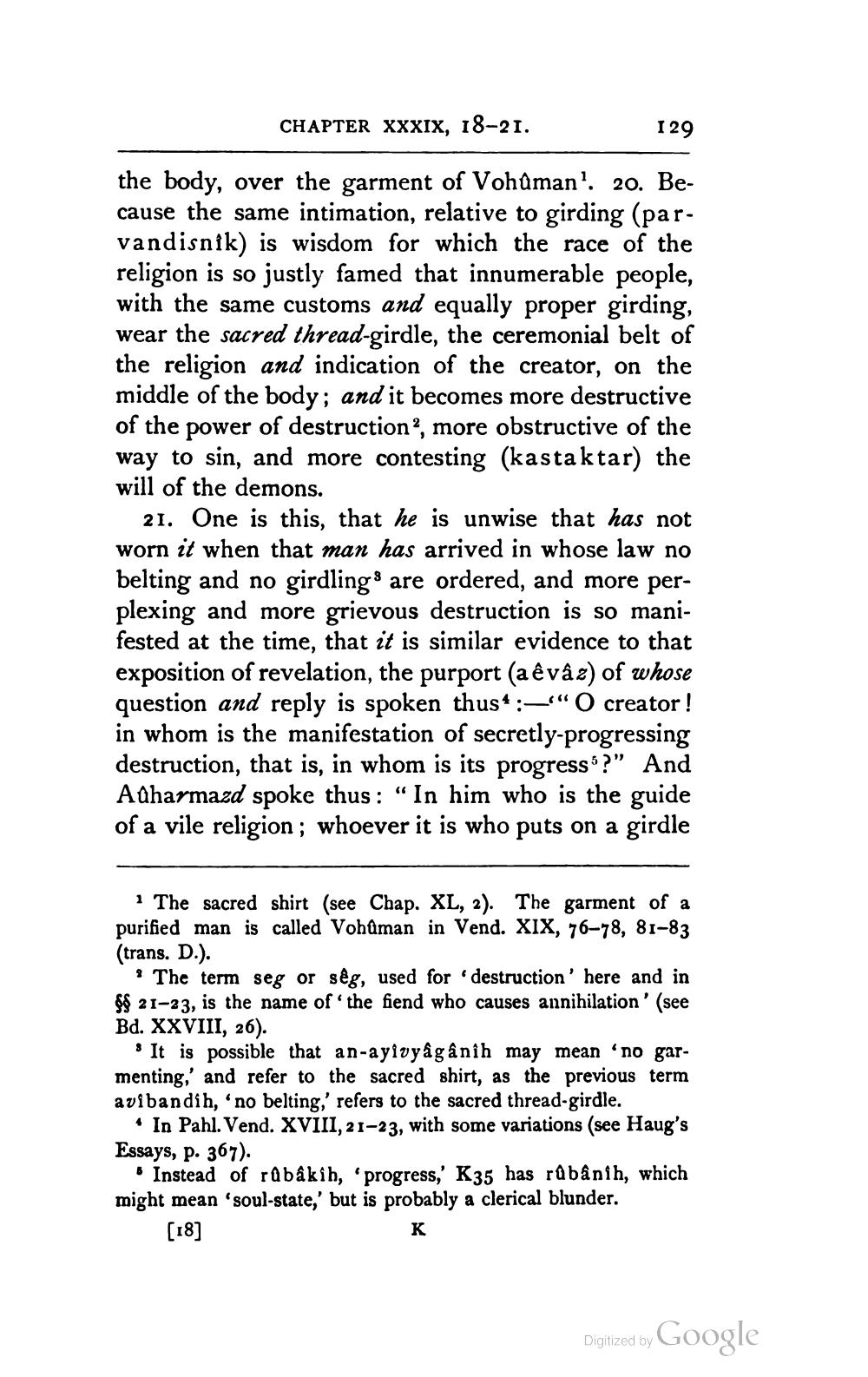________________
CHAPTER XXXIX, 18-21.
129
the body, over the garment of Vohaman? 20. Because the same intimation, relative to girding (parvandisnik) is wisdom for which the race of the religion is so justly famed that innumerable people, with the same customs and equally proper girding, wear the sacred thread-girdle, the ceremonial belt of the religion and indication of the creator, on the middle of the body; and it becomes more destructive of the power of destruction, more obstructive of the way to sin, and more contesting (kastaktar) the will of the demons.
21. One is this, that he is unwise that has not worn it when that man has arrived in whose law no belting and no girdlings are ordered, and more perplexing and more grievous destruction is so manifested at the time, that it is similar evidence to that exposition of revelation, the purport (a êvå ) of whose question and reply is spoken thus* :-""O creator! in whom is the manifestation of secretly-progressing destruction, that is, in whom is its progress?" And Adharmazd spoke thus: “In him who is the guide of a vile religion ; whoever it is who puts on a girdle
1 The sacred shirt (see Chap. XL, 2). The garment of a purified man is called Vohûman in Vend. XIX, 76-78, 81-83 (trans. D.).
? The term seg or sêg, used for destruction' here and in $$ 21-23, is the name of the fiend who causes annihilation' (see Bd. XXVIII, 26).
It is possible that an-ayivyâgânih may mean 'no garmenting,' and refer to the sacred shirt, as the previous term avibandin, 'no belting,' refers to the sacred thread-girdle.
* In Pahl. Vend. XVIII, 21-23, with some variations (see Haug's Essays, p. 367).
Instead of râbâkih, 'progress,' K35 has râbânih, which might mean 'soul-state,' but is probably a clerical blunder.
K
[18]
Digitized by Google




